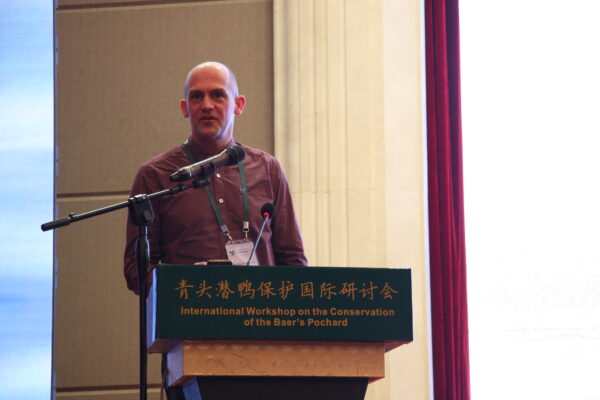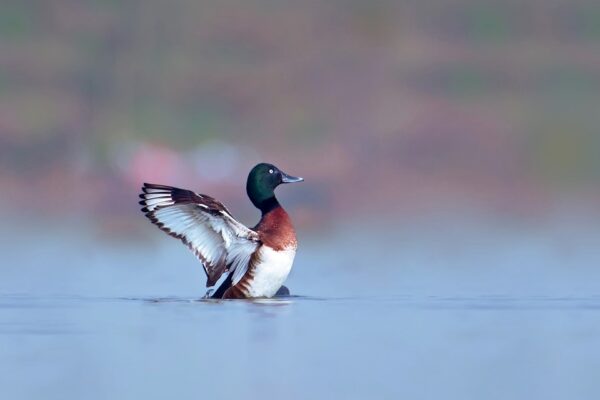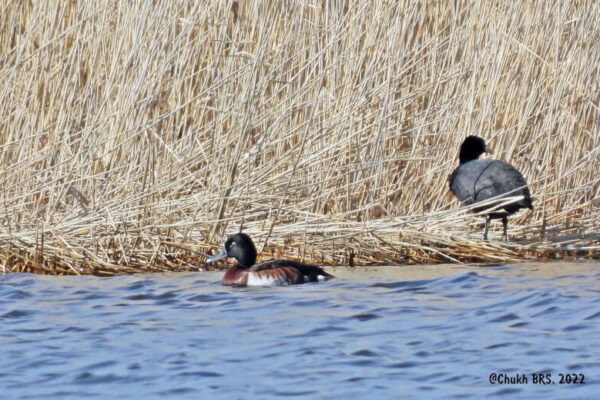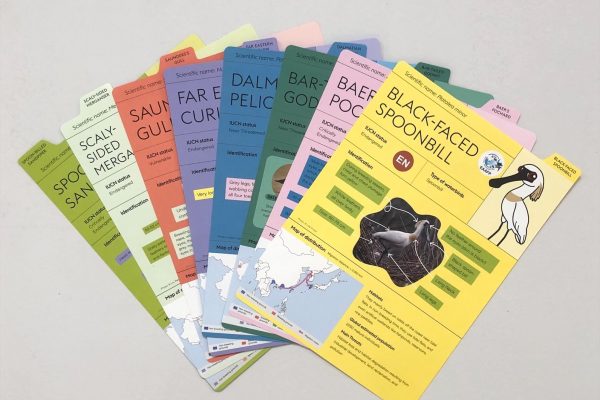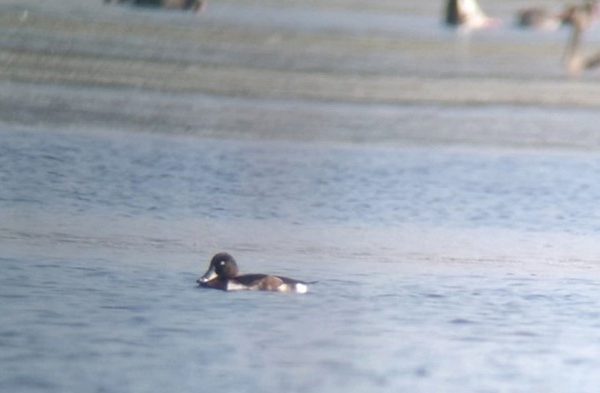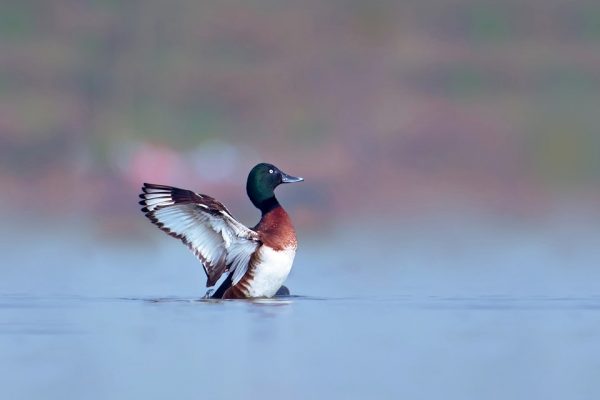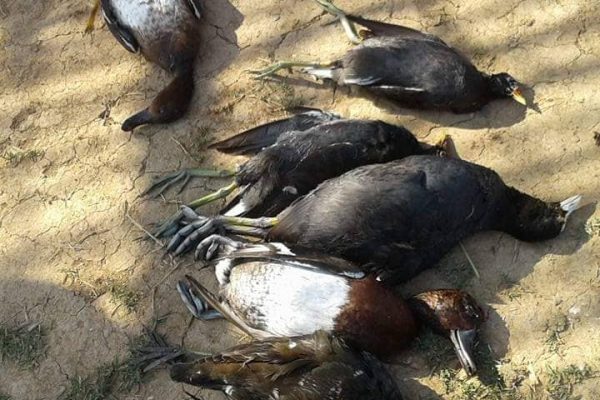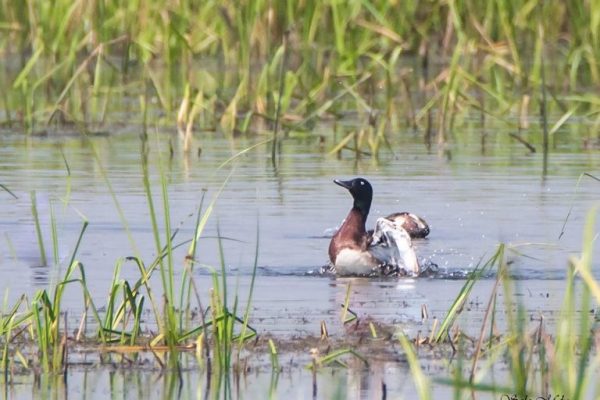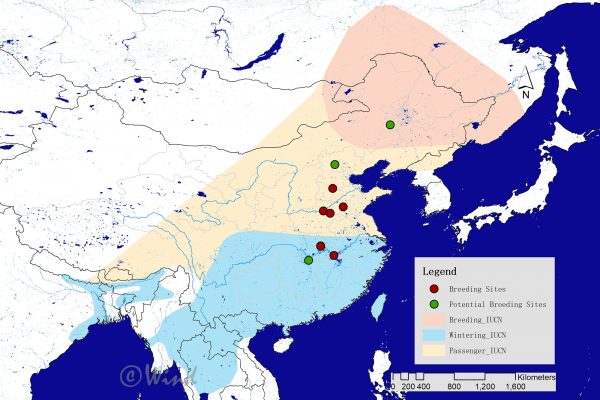-
New paper sheds light on distribution and conservation challenges for Baer’s Pochard
Baer's Pochard ©Luo Jianhong An important new paper, led by Beijing Forestry University, was published in April 2022 about changes in the distribution of Baer's Pochard (Aythya baeri), a critically endangered duck in the EAAF. The paper, entitled "Shifted to the South, Shifted to the North, but No Expansion: Potential Suitable Habitat Distribution Shift and Conservation Gap of the Critically Endangered Baer’s Pochard (Aythya baeri)" reflects seven years of surveys across its historical range. The results show: The southernmost breeding site is about 1400 km south of its current IUCN breeding range; The northern-most wintering site is 800 km north of the IUCN wintering range; Six newly discovered sites in Hebei, Henan, Shandong, Jiangxi and Hubei provinces in China are confirmed to be used all year round; Most sites (81.8%) are not located in protected areas (PAs), and the majority of the suitable habitats (90%) are not protected by the current PA network. Fig. 1. Updated Distribution Map of Baer’s Pochard based on this study. The findings reveal substantial changes to the distribution of Baer’s Pochard and that there are many distribution overlaps throughout its annual migration circle (e.g., many historical stopover sites become breeding habitats). Moreover, most of the habitats overlap with urban developed areas and are outside the current PA network. The authors suggest that the existing PA network may be less effective for the conservation of this critically endangered species under predicted global climate change, and other effective area-based conservation measures should be part of the conservation strategy. More importantly, as the distribution of Baer’s Pochard covers at least 15 countries, closely coordinated cross-border cooperation will be critical for its future survival. Access the full paper here. Article prepared by Terry Townshend of Baer's Pochard Task Force.
Continue reading -
Baer’s Pochard and Ferruginous Duck at Chukh Lake, Northeast Mongolia
The Chukh Bird Research Station (CBRS) is located on the…
Continue reading -
Baer’s Pochard Census will take place in China in January 2022
Building on the successful censuses carried out since 2015 by Beijing Forestry University and the China Birdwatching Association (CBA), in January 2022…
Continue reading -
Research to conserve Baer’s Pochard in Pyu Lake and Paleik Inn, central Myanmar
Data of population and distribution of Critically Endangered Baer’s Pochard was collected during various trips to Pyu Lake, Paleik Inn and Banaw freshwater lakes comprising four years of fieldwork…
Continue reading -
New protection for Baer’s Pochard in China
ⓒ Luo Jianhong On 5th February 2021, the Chinese State Forestry and Grassland Administration announced a crucially important revision of the list of national wildlife under special protection. Approved by the State Council on 4th January 2021, this is the first revision since the original list was published in 1988. It provides very welcome additional protection for a number of threatened waterbirds, including, for the first time, Baer’s Pochard, which is now afforded the highest level of protection (Class I). Previously this species was not included on either the Class I or Class II lists due to its relatively secure conservation status in the 1980s. Whilst most wild birds in China are protected, Class I protection provides stricter levels of punishment, including significant fines and the potential for custodial sentences, for anyone harming these priority species or, crucially, their habitats. For Baer’s Pochard this is significant, as wetland loss and degradation is a major driver of the decline and remains an important issue going forwards as we work to recover its population. An important part of this recovery work is undoubtedly the protection and sensitive management of all sites supporting Baer’s Pochard, whether during the breeding, non-breeding or migration periods. This ecologically sensitive management (the wise use principle enshrined in the Ramsar Convention on Wetlands) also needs to extend to other wetlands within the distribution of Baer’s Pochard with the potential to support the species and to sites where wetland restoration is underway, in order that the small and fragmented population we have today can flourish. This revision of the wildlife under special protection therefore provides a strong foundation for the wetland protection from which we can recover Baer’s Pochard and its wetland home for future generations. The Baer’s Pochard Task Force extends its warm thanks and appreciation to all who contributed to the completion of this important revision. Prepared by Baer’s Pochard Task Force on 10th February 2021
Continue reading -
Community Conservation Area proposed for conserving Baer’s Pochard in Myanmar
The Baer’s Pochard (Aythya baeri) has a small population which is suspected to be undergoing a continuing and rapid decline as a result of illegal bird hunting and wetland…
Continue reading -
Community based conservation of Baer’s Pochard in Myanmar
Baer’s Pochard © Solo Mdy Baer’s Pochard (Aythya baeri) has declined drastically in recent decades. In the 1990s Thailand and Bangladesh…
Continue reading -
2018: a successful year for Baer’s Pochard breeding in China
The population of Baer’s Pochard has rapidly declined in the past 20 years and assessment as Critically Endangered by IUCN. There has been no confirmed breeding of this endangered…
Continue reading

